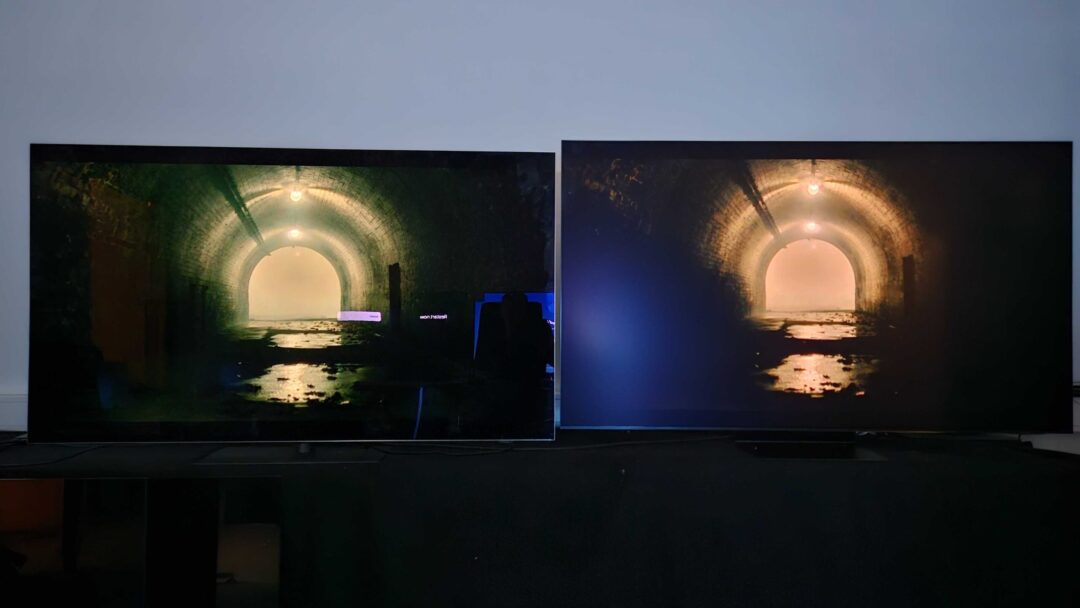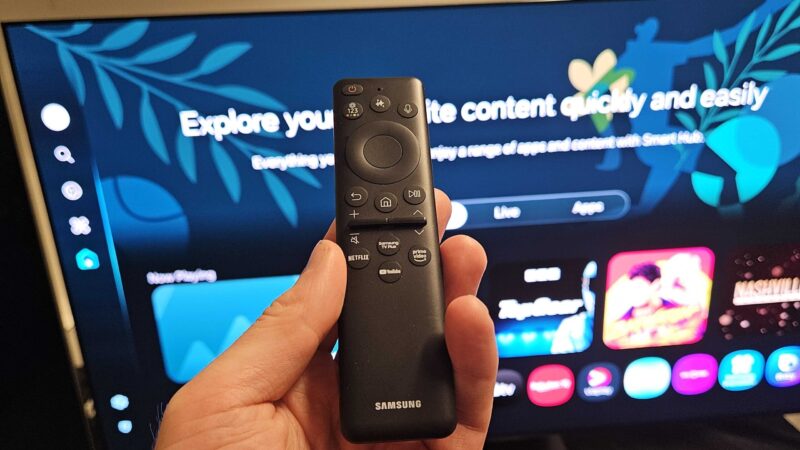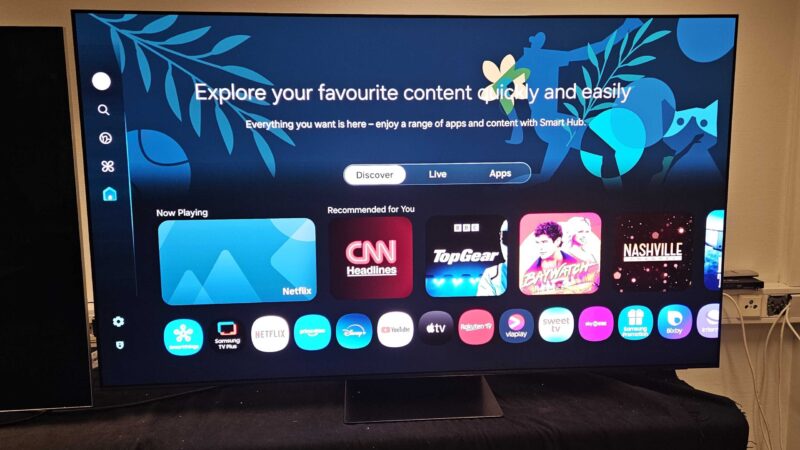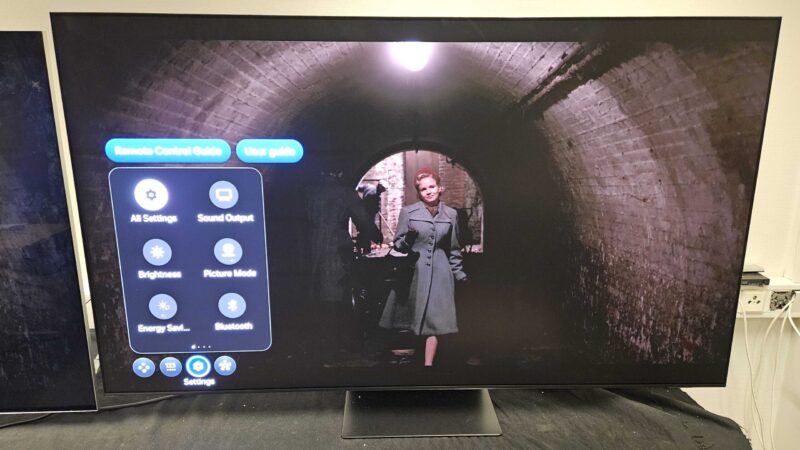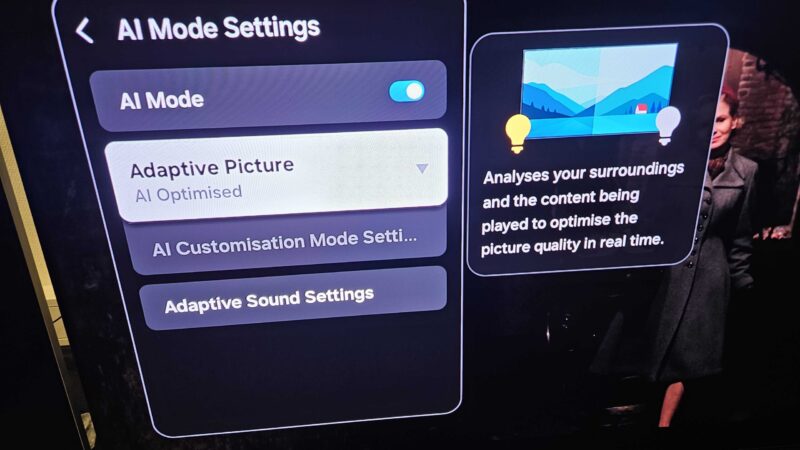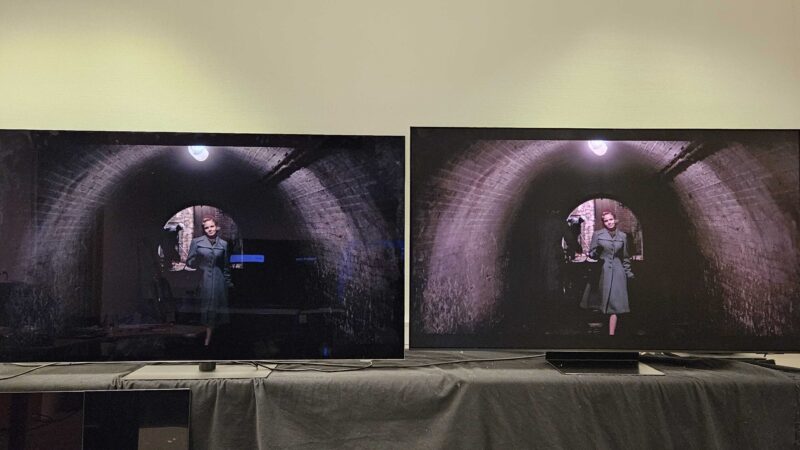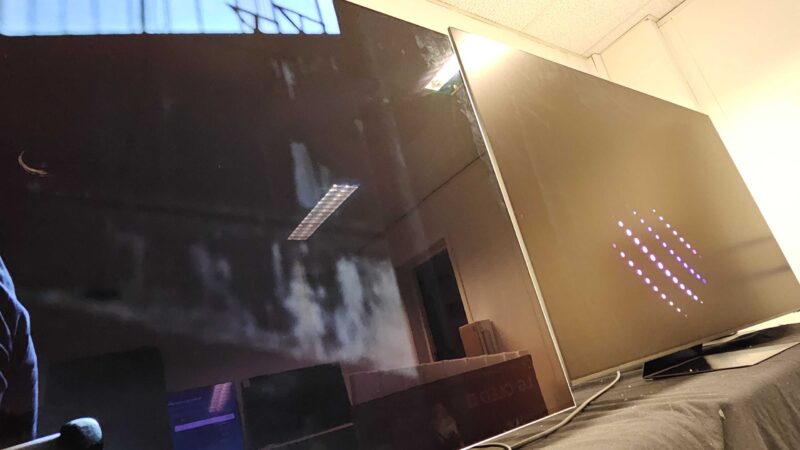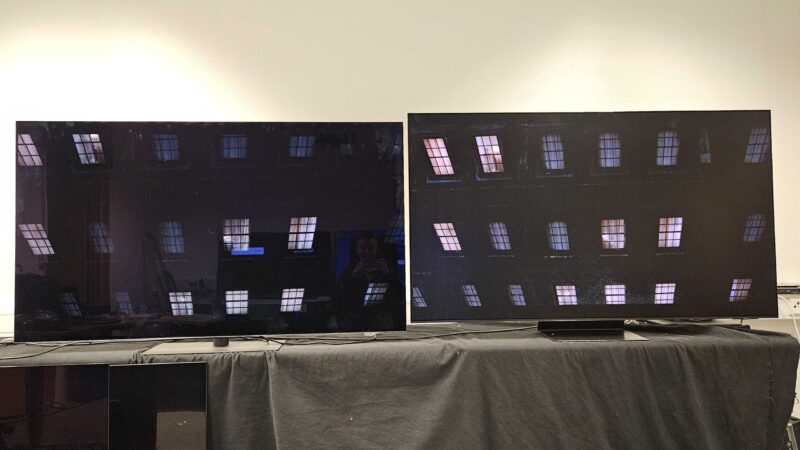The Samsung S95F is the flagship model among the manufacturer’s OLED TVs in 2025. It takes over the lead from last year’s S95D, which was one of the very best OLED TVs we tested last year. Now we finally have its successor on the test bench, and expectations are naturally high.
Samsung was just a hair’s breadth away from being named the best TV of 2024, but was outmanoeuvred by arch-rival LG at the finish line. Now Samsung is back in the game with the top-of-the-line S95F, which appears to have been packed with one goal in mind: revenge! So what could be better than pitting it against LG’s top model, the OLED G5?
Samsung S95F vs. LG OLED G5: Price and screen sizes

Samsung S95F has added an extra screen size to its repertoire this year: in addition to 55, 65 and 77 inches, it is now also available in an 83-inch version – and, ironically, LG plays a role here! The 83-inch model does not use Samsung Display’s QD-OLED panel, but rather an LG W-OLED panel of a similar type to that used in the LG G5. LG also offers an extra-large 97-inch model in the G5 series, but it is not equipped with all the latest technology.
In this test, however, we have tested the 65S95F, and fortunately it has a genuine QD-OLED panel of the latest generation. Samsung claims that the new panel achieves a significant improvement in brightness, while a new matte surface treatment (Glare Free 2.0) should provide even less light reflection. Reflection is a thing of the past with this type of screen, but it can also be TOO matte in some cases – we’ll come back to that.
In terms of price, the two competitors are at the same recommended retail price for 65 inches. LG has been on the market a little longer and is available at a lower price in some places. But this will probably even out over the course of the season.
Design
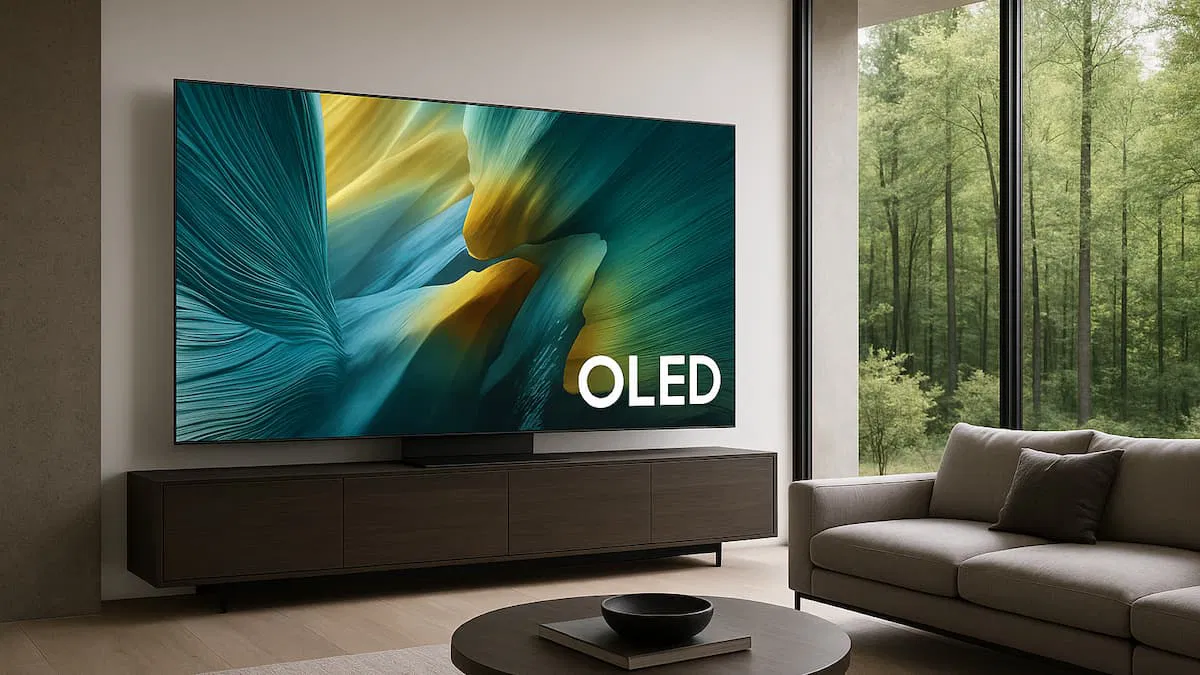
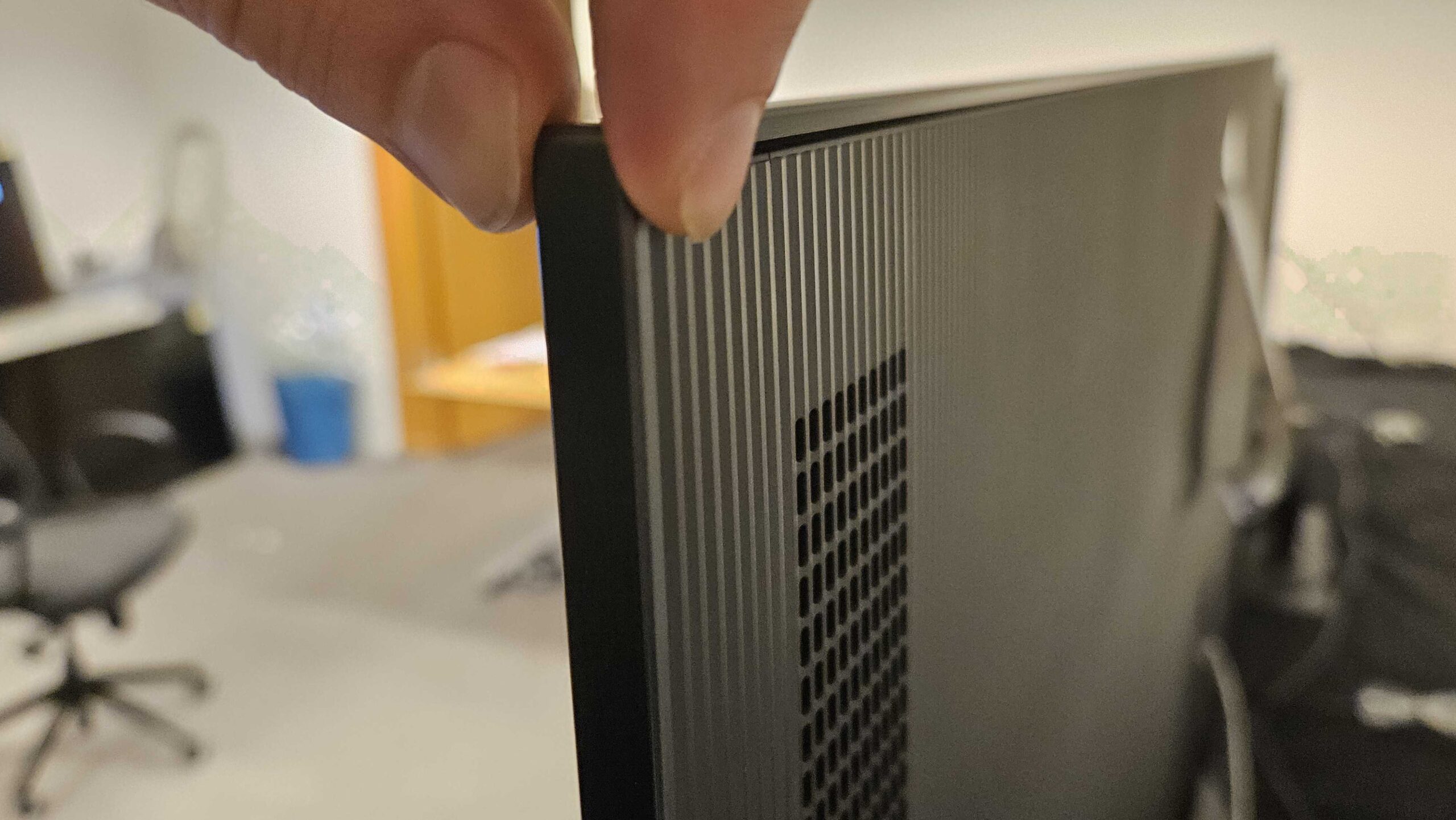
In terms of design, the S95F is virtually unchanged from last year. It is still a very thin OLED screen, with a completely flat back so that it can be hung close to the wall. Nevertheless, Samsung has managed to squeeze in a 4.2.2-channel surround sound speaker system with an output power of 70 watts. This is quite an achievement, considering that the TV is only one centimetre thick across its entire surface.
Samsung’s trick for keeping the TV as thin as previous generations is that much of the electronics and HDMI connectors are not located in the TV screen itself, but in an external One Connect Box. You can choose to mount that on the back of the TV stand or on a nearby shelf. The latter is a good idea if you plan to wall-mount the TV.
However, it should be noted that the S95F does not use the new Wireless Connect Box that comes with the new QN990F and The Frame Pro, but the previous generation with a cable. It is actually quite a thick cable that transmits both power and A/V signals. So you should take this into account (or make a hole for it) if your goal is to achieve a completely clean installation with no visible cables.
The competitor, LG OLED G5, is also very slim and sharp-edged, and there are no protruding parts here either. The screen is only a few millimetres thicker than Samsung’s, but with integrated connections, you can expect a little more “cable salad” – especially if you have many video sources.
It’s also worth mentioning that LG will soon be launching a new M5 model, which is very similar to the G5 but with wireless transmission – so they’ll have an alternative for those who are allergic to loose wires. However, this model is expected to be significantly more expensive.
We are not interior designers, but we must say that the design favours Samsung this time.
User-friendliness and features
Former Samsung owners who switch to the S95F will be greeted by an updated user interface called One UI, which is inspired by the mobile screens from the same team. The menus have been streamlined; for example, the image settings have now been moved to a smart menu window in the lower left corner of the screen. This means that it is no longer necessary to cover the entire screen when you want to change something.
The S95F has four HDMI 2.1 ports and supports up to 165 Hz refresh rate, just like LG. Both screens are also lightning fast; we measured an input lag of approximately 10 milliseconds in Game Mode – significantly faster than models with the wireless box. Both screens also support VRR, Freesync and now Nvidia G-Sync to provide a seamless gaming experience.
The selection of apps is plentiful, as in previous generations, and Samsung is quick to support new services. However, we note that the S95F unfortunately does not have access to Samsung’s Art Gallery – known from the design model The Frame – which several of the QLED models now have.
LG strikes back with a user interface (WebOS) that is about as fast and well-assorted as Samsung’s, but perhaps not quite as clear. On the other hand, you get a touch remote control that is easy to navigate. Existing LG and Samsung owners will probably still prefer “their” system out of old habit.
Upgraded video processor with AI
The biggest upgrade on this year’s S95F is hidden under the hood in the form of a more powerful video processor (NQ4 AI Gen3), which is capable of smarter image processing – with the help of AI, of course.
One of the new features is AI Gamma Correction, which can correct and improve the level of detail in dark movie scenes so that they remain clear under varying lighting conditions in the room. In practice, this means turning up the brightness in dark areas, but in a more intelligent way than before.
If you’ve watched films and series in HDR format, you’ve probably noticed that some scenes can seem too dark – to the point where it can be difficult to see what’s actually going on! The fact is that many films and series are actually designed to be watched in a dark room. The purpose of gamma correction is to even out some of this to suit more normal lighting conditions, and during testing we found it extremely useful in many cases. The brightness is increased without negatively affecting the colours.
Picture quality
With Samsung and LG side by side, there is no doubt that we are looking at two powerful OLED screens. Both deliver top-class image quality, but each has its own distinctive features. LG’s has already been thoroughly described, so what more can Samsung contribute?
The first impression is that the Samsung screen has become even brighter than its predecessor and almost as bright as LG’s: the S95F delivers 2,200 nits in a 10% window compared to LG’s 2,300. In practice, this is a very small difference, and it allows the S95F to deliver HDR content with sparkling high-light effects and, above all, stunning colour nuances. Because it’s not just the “whitest white” that has become stronger, but also the colours.
In fact, in some cases, the colours can almost seem too strong. Samsung’s own Film setting has a preference for warm and red skin tones, which can give film characters a slightly reddened appearance compared to LG. This evened out when we switched to the more neutral Filmmaker setting. But it is still LG that has the most accurate colours with lower deviations in the measurements.
On the other hand, if you are the type who wants to show off what your TV can do, it may be exciting to check out Samsung’s new “AI” adaptive picture setting. It must be activated in a separate menu and automatically adjusts sharpness, noise reduction and other parameters depending on the content you are watching. It can also learn your preferences and create a custom setting.
LG's new OLED TV has big shoes to fill. Can the G5 surpass the performance of its impressive predecessor, the G4? Now we know the answer - and what to look out for.
Our impression is that, as expected, the AI setting significantly increases contrast, colour and sharpness, but it does so in a more gentle and intelligent way than simply putting the TV in dynamic mode. We prefer Samsung’s AI setting, as it looks more balanced than LG’s. If you like a little extra “spice”, you can safely choose this setting for most TV content without worrying about the settings along the way.
When it comes to HDR, it appears that Samsung has no plans to ever support the popular Dolby Vision format on its TVs. On the other hand, Samsung’s “own” HDR10+ format is starting to gain wider support from streaming services such as Netflix and Disney+. This means that Samsung users will also be able to access higher quality HDR content than they could previously.
The non-reflective screen makes a big difference
The competing screens both offer excellent contrast and deep black levels thanks to OLED technology, which can turn each individual pixel on and off. But there is a significant difference in the “canvas” on which they display the images.
Samsung introduced OLED with a matte screen (called Glare Free) last year with the S95D, and this year they have managed to improve the formula slightly. The S95F with Glare Free 2.0 has become even better at reducing light reflections from the front and sides. At the same time, a dark black level with fewer grey tones is maintained. But the main difference is still the same, namely that the matte screen surface has a major practical impact on the viewing experience.
With the Samsung S95F, we can say that annoying mirror images are a thing of the past. The screen is super matte, so any reflection from the room is gone. If youhave been bothered by light coming in from windows directly behind your sofa, this screen is likely to be the right solution. Without screen reflections, you will be able to see more of the image itself.
LG, on the other hand, has chosen a slightly different strategy. Their OLED panel uses a dark filter to reduce internal and external light reflections, and it works more effectively than previous generations. But the screen is still glossy.
This difference means that the images on the LG screen have a more “polished” and shiny appearance, while Samsung, as expected, is more matte in the darkest colours. Imagine a freshly washed black limousine compared to one with slightly dull paintwork, and you’ll understand what we mean.
Which screen is “best” for displaying images therefore depends on preferences and environment. The difference is most noticeable in a bright room or in the evening with lamps in front of the screen. Under such conditions, Samsung has a big advantage. In a completely dark room, however, there is not much difference unless you shine a torch on both screens – then Samsung is clearly more matt.
Sound quality
When it comes to sound reproduction, however, there is no doubt that the results are in Samsung’s favour. The S95F has a more powerful sound system with multiple speaker units, and this is clearly audible. The Samsung screen has an impressively strong and clear sound with rich bass and clear voice reproduction. The LG screen, on the other hand, is a little darker and more enclosed in its sound reproduction.
Both screens would, of course, benefit from a little extra help in the form of an external sound system. We have had particularly good experiences with Samsung’s own soundbars, such as the top-of-the-range HW-Q995F, which we recently tested with good results. Here you get a sound experience that matches the magnificent picture experience.

We think
The Samsung S95F delivers a razor-sharp image with even higher brightness than its predecessor and an even more matte screen glass that reduces reflections. The colour reproduction in film mode could be even more neutral. The Samsung screen still does not support the HDR format, Dolby Vision – but that is no longer such a big drawback.
3499 €
Specifications
- Size/type: 65” 4K QD OLED TV
- Resolution: 3,840 x 2,160 (4K Ultra HD)
- Panel frequency: 120/165 Hz
- Operating system: Tizen
- Inputs: 4 HDMI (4x 2.1), 3 USB
- Outputs: HDMI eARC
- HDR: HDR10+, HLG
- Gaming: ALLM, VRR, G-Sync
- Screen sizes: 55, 65, 77 and 83”
- Other: One Connect Box
- Web: samsung.com
